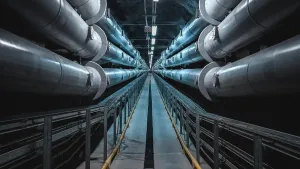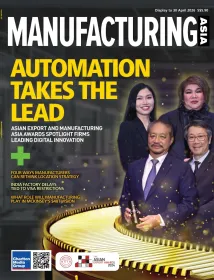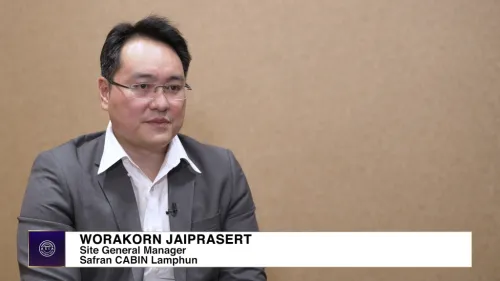The Move to 5G: Enabling more resilient, event-driven supply chains in a new age of industrial manufacturing
By Sumeet PuriIn line with Singapore’s smart nation ambitions, the city-state will be phasing out 3G networks by July 2024, and utilising the freed-up spectrum to enhance 5G services. Harnessing the full power of 5G creates a new era of possibilities for Singapore, which has a long-standing reputation as a leading smart manufacturing hub.
The high-speed connectivity, low latency, and high bandwidth characteristics of 5G networks promise significant advancements in manufacturing and supply chain capabilities. For example, manufacturers on 5G networks will be able to connect billions of devices such as machine sensors and equipment, connected cars, and more with less network equipment, opening up a whole new world of applications and opportunities.
Some enterprises in Singapore are already eyeing 5G to re-engineer operations. Tuas Port, which will be the biggest port in the world once fully rolled out, is deploying a private 5G network to support 5G-enabled automated guide vehicles (AGVs) and Automated Cranes, while also exploring future use in Smart Grid5 and cargo handling operations.
The impending sunset on 3G networks offers the industry a widespread opportunity to revolutionise data-intensive processes, employ automated machinery, and establish real-time production and monitoring control – boosting the industry’s operations and service offerings.
But as the manufacturing industry embraces the full potential of 5G, the need for effectively managing and orchestrating real-time visibility across all levels of operations becomes paramount. The adoption of an event-driven operational framework – underpinned by an event-driven architecture (EDA) – will lay the foundation for a new era of agility and efficiency.
Unlocking opportunities unveiled by 5G in industrial manufacturing
The advancements in 5G present both challenges and opportunities for manufacturers. By connecting more devices and sensors, huge waves of data are generated in near real-time, roughly 1000 times higher data volumes than are currently present on today’s mobile networks. The conventional architecture that funnels all data back to a centralised data centre will be insufficient for processing and responding rapidly to the ever-growing torrents of information delivered at 5G speed and satisfying end-user requirements.
This necessitates a change in how manufacturers architect their IT systems and manage their underlying infrastructure to deal with the extensive volume of real-time data. A faster, more capable, more bandwidth network backbone needs a complementing application data movement layer. A new approach is required to help manufacturers make the most of 5G – one that adopts EDA to allow them to reliably share data throughout the smart factory that spans edge, cloud and on-premise applications.
The role of an event mesh in 5G empowerment
EDA – and by extension event mesh – is an application and integration architectural choice to fully leverage the 5G evolution. When networks become faster than disk, a radical shift in application development can bring about much better customer experience and insights into applications. We have already become accustomed to streaming music and movies, rather than downloading them, changing customer experience and insights in a never-before-seen way. This has also opened a tremendous amount of business opportunities, while shutting down many businesses which did not see this shift coming.
For manufacturers to move at today’s speed of business, they must stream data from devices between the applications and microservices that process them in real-time so that insights can be gleaned and decisions made quickly. Take, for example, sensor data that indicates a faulty component on a machine. When that information is streamed in real-time, manufacturers can quickly schedule maintenance or repair work, ensuring that the problem is addressed with minimal production delays across the factory. In this case, the information exchanged between the sensor and application is called an event. This can also be a change, action or observation in a system that produces a notification. Other events can be more basic, such as a battery charge level threshold being met, or a periodic temperature reading from a sensor on a remote device.
Making use of the volume of events and the information in event streams requires an event-driven architecture, which promotes the production, detection, consumption of, and reaction to events. Adopting an event-driven approach to systems integration plays a crucial role in ensuring manufacturers effectively utilise 5G capabilities through timely, event-triggered interactions, which is particularly crucial given the intricacies of interconnected and data-intensive manufacturing operations. In this paradigm, manufacturers can plan how events are interpreted, transformed, published and subscribed, propagated across distributed networks so that the entire factory can be connected and reactive in real time.
Complementing this, an event mesh acts as a communication layer that facilitates smooth data exchange among various applications and microservices, aiding in expediting decision-making. With an event mesh, manufacturers can easily allow events from one application to be published and then subscribed by any other application – no matter where these applications are deployed – with the scalability, performance, and security required to support today’s real-time applications. To make it more efficient for users, organisations such as GovTech have also developed an event catalogue that enables the discovery and sharing of event data, such as status updates or event streams in real-time, across both the Internet and Intranet.
Singapore-based PSA is one enterprise leveraging this evolution of 5G by becoming event driven. As explained extremely well in this article by Ho Vee Leung, PSA CIO, most of the work at the port is performed by unmanned driverless vehicles, or AGVs, while creating new job opportunities. PSA plans to implement artificial intelligence, data analytics, robotics and other applications to bolster the nation’s maritime prominence.
The core of smart factory strategies is founded on a real-time event infrastructure that connects all elements, fostering end-to-end integration, event-driven processes, and heightened visibility across the global value chain. For high-tech manufacturers aiming to remain competitive in the dynamic manufacturing landscape, the implementation of event-driven systems becomes imperative.
Challenges and complexities in the shift to 5G for manufacturers
The reality is that the transition to 5G will not be a small undertaking. Manufacturers will face challenges and complexities that require careful consideration. A central challenge lies in the integration of 5G-enabled devices and systems into existing infrastructure, posing potential issues related to standardisation and interoperability. Manufacturers must adapt to evolving industry standards, which can change rapidly, and ensure that the new 5G-enabled systems can seamlessly coexist with various existing technologies. This implies a need for careful planning and strategic adjustments to accommodate the technological changes without disrupting the overall operational flow. Navigating through these complexities requires a nuanced approach to balance existing systems and emerging 5G technologies effectively.
Revolutionising manufacturing with the collective power of 5G and EDA
The vast potential embedded in 5G technology is undeniable, offering an unprecedented opportunity for manufacturing companies to pioneer innovation and progress within the industry. In lockstep, manufacturers should not forget the critical need for their integration strategies to be more event-driven. Those who embrace the collective power of EDA and 5G in this ever-evolving landscape will undoubtedly find themselves at the forefront of the smart factory revolution.

















